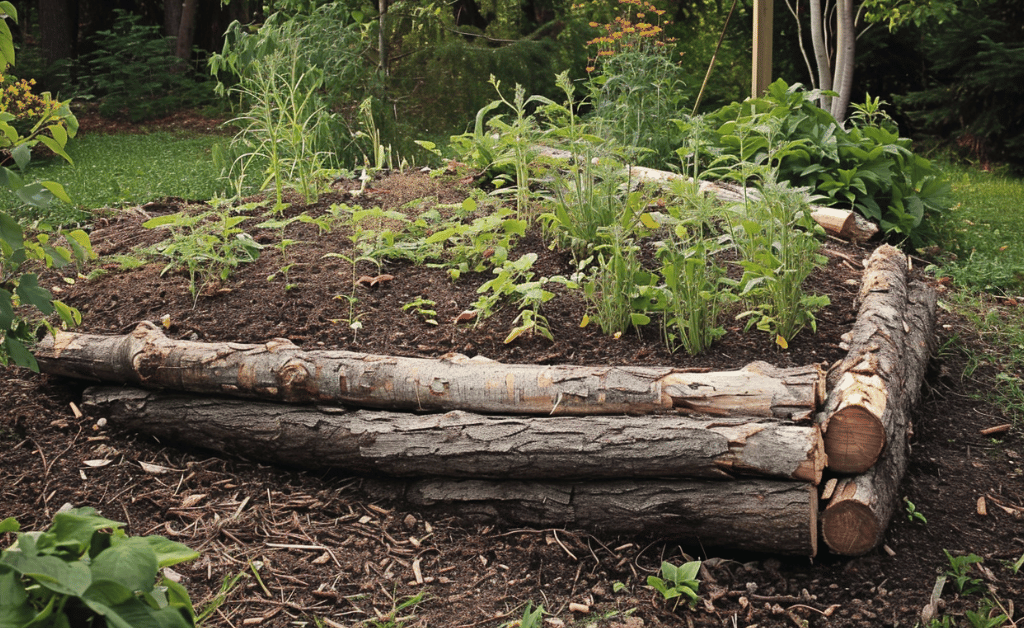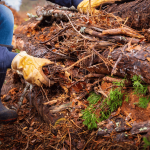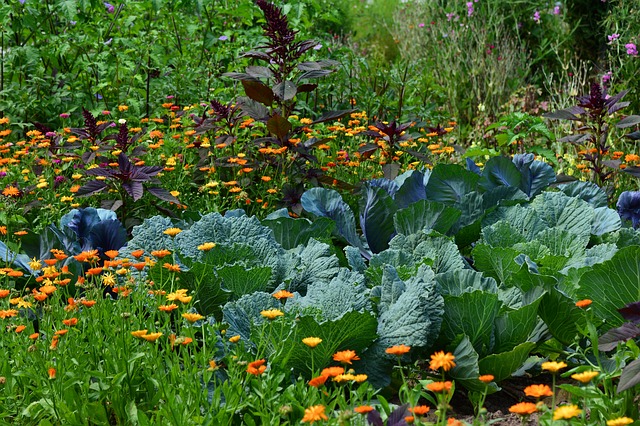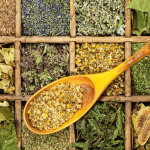Unearthing Potential: Hugelkultur on Raw Land

Imagine turning that forgotten corner of your backyard or the newly acquired plot of land into a flourishing garden. Hugelkultur, a centuries-old agricultural technique, offers just that possibility. Whether you’re a homesteader, a homeowner looking to use unused land, or simply someone interested in sustainable gardening, Let’s delve into how this method can transform even the most neglected land into a productive and eco-friendly garden. Hopefully, this article will guide you through the benefits and practicalities of implementing Hugelkultur, making it a viable option for everyone, regardless of their farming background.
Understanding Hugelkultur for Raw Land
Hugelkultur is a sustainable gardening technique that has deep historical roots in Germany and Eastern Europe, known for its unique approach to replicating natural forest decomposition processes. This method is particularly effective for raw, uncultivated land as it involves constructing raised garden beds using organic materials like logs, branches, leaves, grass clippings, and compost. Over time, these materials decompose, enriching the soil with nutrients and creating an ideal environment for plant growth.
The practice of Hugelkultur mimics the natural decomposition that occurs in forests, where fallen trees and other organic matter slowly break down, enriching the soil. This makes Hugelkultur a form of “mimicry permaculture,” which aims to emulate patterns and features observed in natural ecosystems. Such practices have been observed in various traditional farming and gardening cultures around the world, making Hugelkultur a globally relevant technique.
Control Moisture with Hugelkultur Beds
A significant advantage of Hugelkultur, especially for raw land, is its ability to control moisture. The branches and logs used in Hugelkultur beds act as natural sponges. As they decompose, their water-retention capacity improves, reducing the need for frequent watering. This feature is particularly beneficial during dry periods, making Hugelkultur an efficient method for areas prone to drought. Additionally, ground cover plants, like squash, oregano, or potatoes, and mulching techniques can be used to enhance moisture retention further.
When constructing a Hugelkultur bed, it’s essential to use readily available, untreated organic materials. This aligns with sustainability principles, minimizing transport and making the most of local resources. However, it’s crucial to avoid using treated wood or certain types of resistant wood, like cedar or redwood, unless they’re part of a frame intended to resist decomposition. Suitable materials include logs and branches, old untreated building materials, grass clippings, leaves, kitchen scraps, half-composted material, seaweed, newspapers, cardboard, straw, and manure. The addition of manure boosts the nitrogen content of the soil, essential for plant growth.
For a deeper understanding of the types of wood suitable for Hugelkultur beds, it’s beneficial to refer to studies that analyze the suitability of different wood types. For instance, softwoods like pine decompose more rapidly, enriching the soil quickly, whereas hardwoods decompose slower, providing a sustained nutrient release.
The Ecological Benefits of Hugelkultur on Untouched Land
Enhancing Soil Quality and Biodiversity
Applying Hugelkultur to raw land significantly improves soil quality, akin to the natural enrichment process found in forest ecosystems. The decomposition of organic materials within Hugelkultur beds fosters a rich microbial life, vital for healthy soil. These microorganisms play a crucial role in breaking down organic matter, making nutrients more readily available for plant uptake, and improving soil structure and fertility.
Beyond soil health, Hugelkultur enhances overall garden biodiversity. The varied decomposition stages within the beds create habitats for different organisms, such as beneficial insects and earthworms. These creatures are essential for processes like pollination, pest control, and further decomposition. By encouraging a range of life in the garden, Hugelkultur aligns with sustainable and eco-friendly practices, as discussed in the article “The Role of Earthworms in Sustainable Gardening and Agriculture“.
Water Conservation and Natural Irrigation
Hugelkultur is notable for its water conservation capabilities, especially beneficial for areas with limited water resources. The woody materials at the base of the beds absorb and retain moisture, significantly reducing the need for additional watering. This feature is invaluable during periods of drought, positioning Hugelkultur as an efficient method in water conservation efforts.
The unique mound structure of Hugelkultur beds also contributes to effective water management. It facilitates natural drainage, preventing waterlogging, while maintaining adequate soil moisture levels. This ensures a healthy growing environment for plants, especially in regions with fluctuating rainfall. Such water management techniques are elaborated in our “Winter-Resilient Plants for Sunken Hugelkultur Beds” article, highlighting how Hugelkultur can adapt to different climatic conditions.
Hugelkultur’s approach to enhancing soil quality, supporting biodiversity, and conserving water makes it a valuable practice for transforming raw land into productive, sustainable garden ecosystems.
Practical Steps and Challenges in Implementing Hugelkultur
Selecting the Right Materials and Building Your Bed
Building a Hugelkultur bed begins with selecting the right materials. Ideal components include logs, branches, leaves, grass clippings, straw, and non-treated wood scraps. It’s essential to avoid chemically treated wood, as it can leach harmful substances into your garden. Layering these materials forms the foundation of your Hugelkultur bed. Start with larger logs at the bottom and progressively add smaller branches, compostable kitchen scraps, leaves, and finally, a layer of soil. This setup encourages effective decomposition and nutrient release.
For detailed guidance on material selection and bed construction: “What is Hugelkultur?“
Dealing with Environmental and Regulatory Challenges
Implementing Hugelkultur beds, especially on raw land, can come with its set of environmental and regulatory challenges. It’s crucial to consider the specific conditions of your land, such as sunlight exposure, wind patterns, and existing vegetation. Additionally, understanding local regulations regarding land use and gardening practices is vital to ensure that your Hugelkultur project aligns with legal guidelines.
Addressing these challenges requires careful planning and might involve consulting with local gardening experts or regulatory bodies. For insights on common mistakes and challenges in Hugelkultur gardening: “Hugelkultur Mistakes“.
Maintaining Your Hugelkultur Bed
Effective maintenance is key to the long-term success and productivity of a Hugelkultur bed. As demonstrated in the “Hugelkultur Maintenance” video by Dan from Plant Abundance on YouTube, understanding the nuances of upkeep can significantly enhance the performance of these unique garden structures.
Monitoring Decomposition and Replenishing Organic Matter
Observing the decomposition process is crucial. Dan notes that while Hugelkultur mounds may appear messy, this is part of their natural cycle, especially during preparation for spring. As the organic materials in the bed decompose, the height and structure of the mound will change. It’s essential to add new layers of soil, particularly in areas where the original material has decomposed and left exposed sections. This not only maintains the structure but also ensures continued nutrient availability for plants.
Managing Plant Growth and Soil Health
The video highlights the importance of managing plant growth for maintaining a resilient Hugelkultur bed. Dan demonstrates transplanting borage plants from the mounds to other areas in his food forest, showcasing how to manage overgrowth and utilize plants effectively. Additionally, the presence of branches on the surface, a result of perennial greens, contributes to the bed’s resilience. These branches support the new soil layer and prepare the bed for an additional layer of wood chips.
Adapting to Changing Environmental Conditions and Winterizing
Dan emphasizes the importance of adapting maintenance practices to seasonal changes. Although he experienced a delay in his usual October maintenance schedule, he underscores the necessity of winterizing the mounds. This involves adding wood chips and soil, doing patchwork with tree branches, and preparing the garden for spring. These steps are crucial for ensuring continual decomposition and bed health during the colder months.
Benefits of Annual Maintenance
The video concludes with Dan highlighting the long-term benefits of Hugelkultur. He points out that annual maintenance can lead to months of productive growth, underscoring the efficiency and sustainability of this gardening method. This approach aligns with the principles of permaculture, emphasizing minimal intervention for maximum yield.
Regular maintenance, informed by real-world practices like those demonstrated by Dan, is essential for the success of a Hugelkultur bed. By staying attentive to the bed’s needs and adapting to environmental changes, gardeners can ensure a thriving, sustainable garden ecosystem.
Conclusion
In exploring the world of Hugelkultur, we’ve uncovered a wealth of benefits and practical approaches for implementing this sustainable gardening technique on raw land. From enhancing soil quality and biodiversity to effectively managing water resources, Hugelkultur offers a unique solution for transforming underutilized spaces into productive, eco-friendly gardens.
The practical steps and challenges associated with establishing Hugelkultur beds highlight the importance of thoughtful planning, material selection,and adaptation to local conditions. As demonstrated in real-world examples and through practical guides like Dan’s “Hugelkultur Maintenance” video, the success of Hugelkultur lies in its flexibility and responsiveness to the environment. Gardeners and landowners can tailor Hugelkultur techniques to suit various climates, soil types, and landscapes, making it a versatile option for diverse gardening projects.
Moreover, the ongoing maintenance of Hugelkultur beds, crucial for their long-term viability, teaches us the value of continuous learning and adaptation in gardening. By monitoring the decomposition process, managing plant growth, and adapting to seasonal changes, gardeners can maintain the health and productivity of their Hugelkultur beds year after year.
Hugelkultur is more than just a gardening technique; it’s a sustainable approach that aligns with the principles of permaculture and ecological stewardship. It encourages us to work with nature, rather than against it, fostering a deeper connection with the environment. Whether you’re a seasoned gardener, a homesteader, or a beginner with a patch of raw land, Hugelkultur offers an opportunity to engage in a sustainable, productive, and environmentally conscious form of agriculture.




